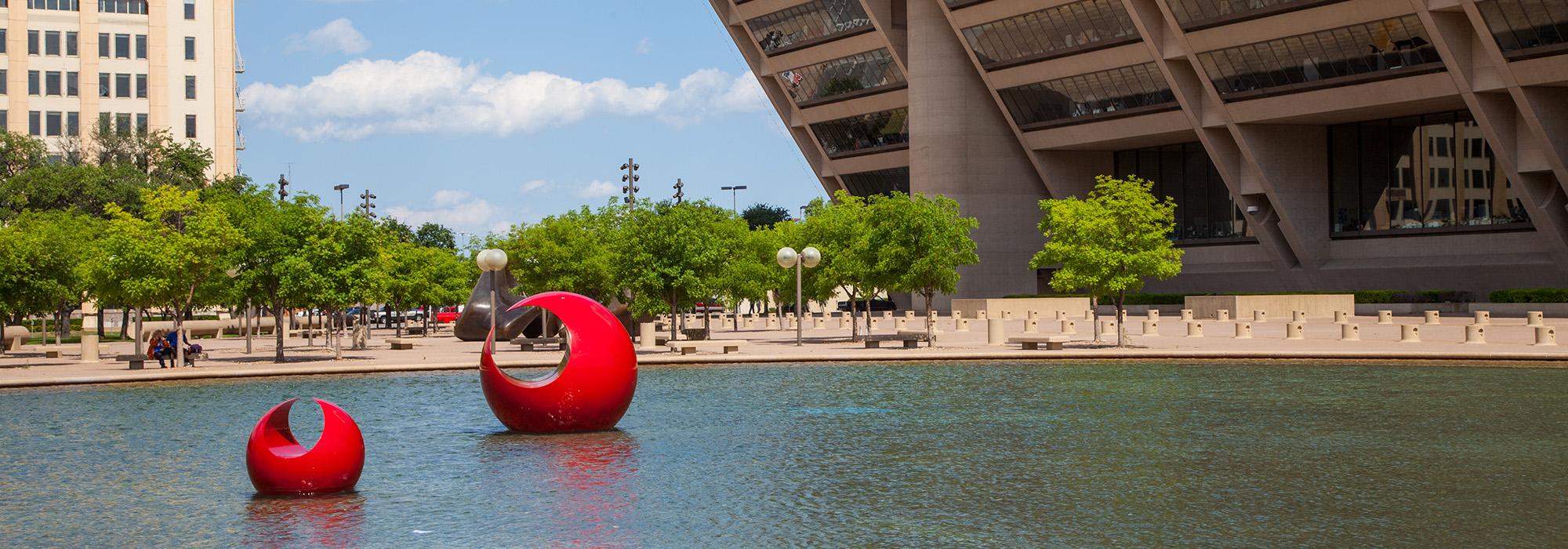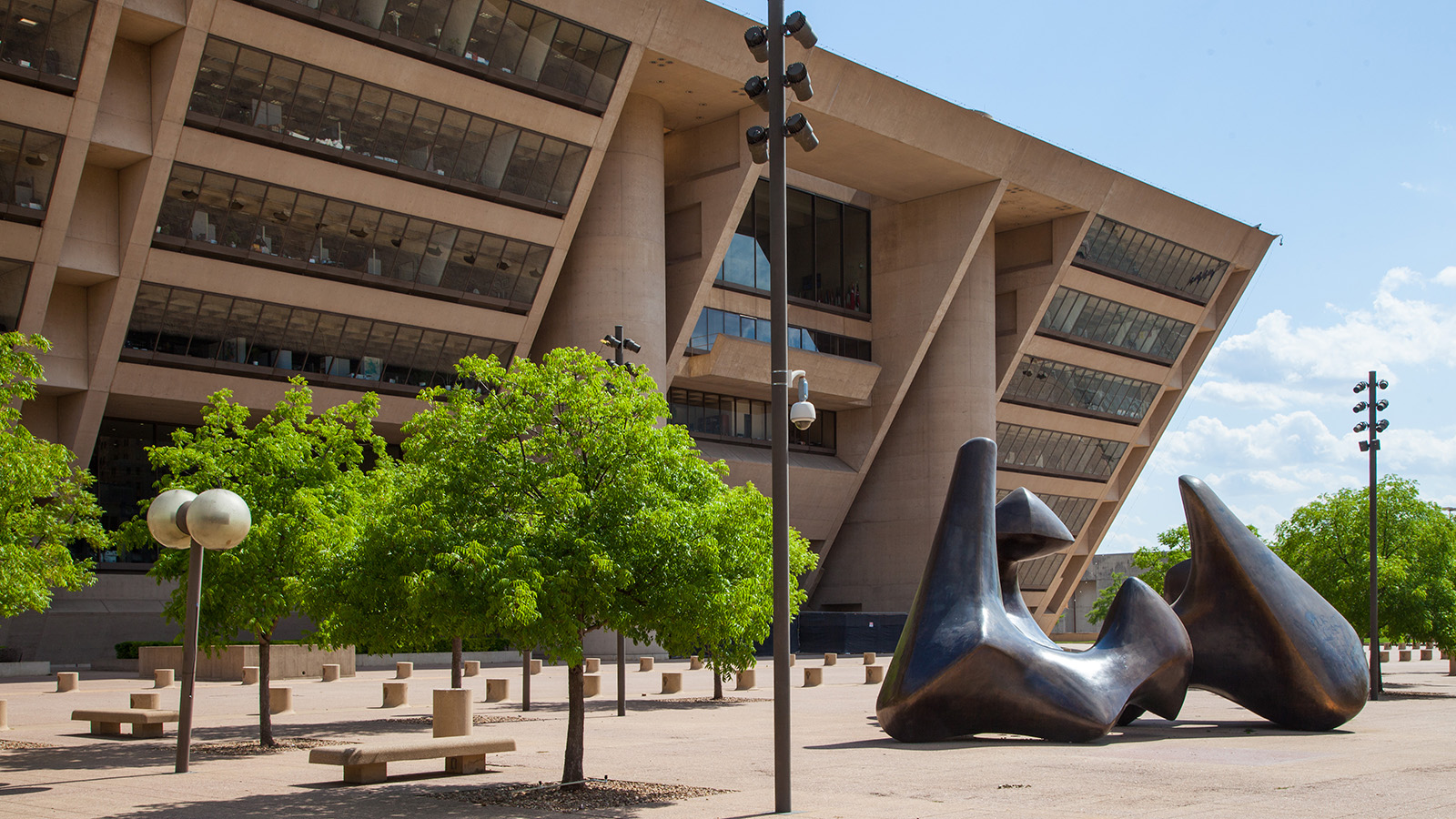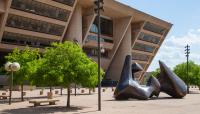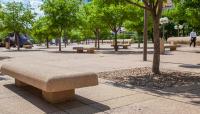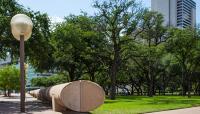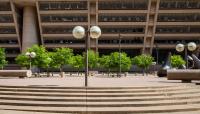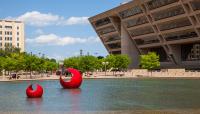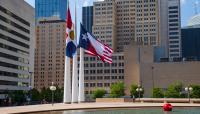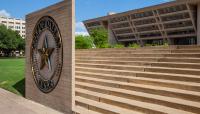Landscape Information
Conceived as part of Mayor Erik Jonsson’s rebuilding of the city’s image after the assassination of John F. Kennedy at Dealey Plaza in 1963, City Hall was designed as a contemporary icon for Dallas residents. Commissioned to produce an architectural beacon for the city, I.M. Pei & Partners developed a cantilevered structure, completed in 1977, adjacent to an underground parking garage. Atop the garage, local landscape architecture firm Myrick, Newberg, Dahlberg and Partners designed the park plaza and fountain in response to Pei’s triangular form.
Spanning an area two-blocks long and one-block wide, the seven-acre plaza is divided into two right triangles by a formed concrete tube that separates the vegetated segment on the east from its paired concrete plinth to the west. The eastern section is comprised of a flat expanse of lawn and a bosque of live oaks. A semi-circular arrangement of steps transitions the grade change between the lawn and the elevated concrete plaza. The centerpiece of the buff-colored concrete plinth is a 180-foot diameter reflecting pool with a variable height fountain. Two floating red spherical sculptures that spin when activated by the wind were designed by artist Marta Pan and installed in 1978. Designed in collaboration with Pei, sculptor Henry Moore’s three piece metallic abstracted vertebrae “The Dallas Piece” punctuates the plaza and contrasts with its strong formalism. Three 84-foot tall conical flagpoles are situated on the northwest corner of the plaza. Red oaks planted near the reflecting pool were recently replaced with Chinese pistache.



